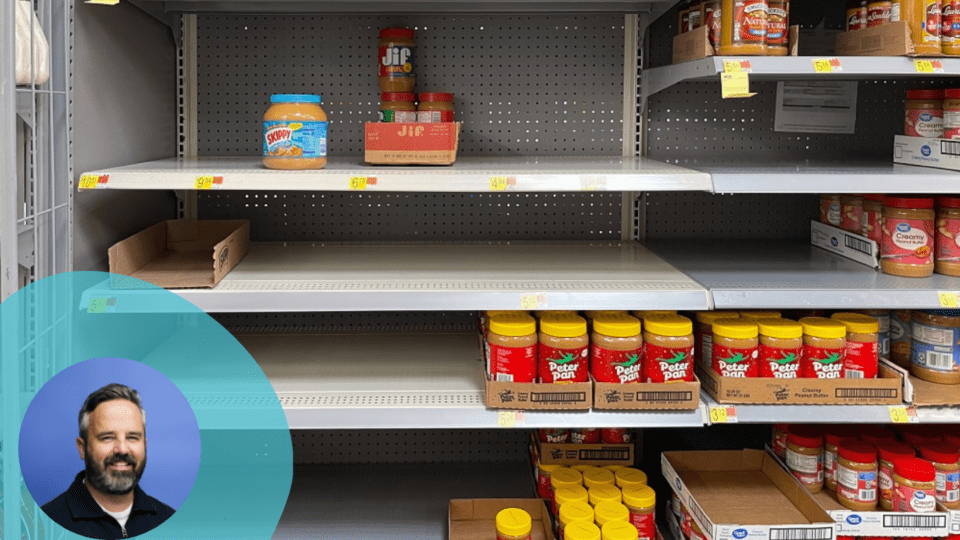For customers, many aspects of a shopping trip impact whether they view it as a success. From the customer service of store associates to the quality of the products for sale, every store visit has its own unique factors that play into a customer’s overall satisfaction — factors that become irrelevant if the product a shopper is looking for isn’t available.
Unfortunately, on-shelf product availability continues to be a key issue within grocery retail. According to a Retail Insight survey of over 1,000 U.S. grocery shoppers, 78% of consumers have experienced out-of-stock products in-store over the last 12 months, and 68% have experienced the same issue online. Furthermore, 75% of consumers said that poor product availability seems to be more of a problem sincethe pandemic, suggesting that developing factors like labor shortages and climate change are more to blame for the current situation plaguing retailers.
Tackling this problem is complex. Traditional methods of manual audits and gap scans are time-intensive and only provide a picture of your availability at that given moment in time. Retailers that have moved to a data-driven approach have improved their sales, operational efficiency and overall profitability.
Using Data and Cognitive Technology to Improve Product Availability
The first challenge in gaining an accurate view of on-shelf availability is deciding which data to use. From the moment a product enters the store via a delivery to the moment it exits the store through the checkout, there is very little data that retailers can leverage to make decisions. All it leaves you with are some of the foundational data points that retailers’ systems of record and engagement provide; sales file, item file, inventory file, store file and the ranging file.
Advertisement
Once retailers have this data, the next obstacle to creating a view of product availability is accuracy. Retailers that base decisions on incomplete or inaccurate data see a large chain reaction effect on many of their key operational performance metrics. This impacts in-store availability numbers perhaps most prominently, but the reactions are felt across sales, shrink and labor as well.
Surfacing accurate and relevant data is one piece of the puzzle; the other is about how retailers blend them to create a real-time view of availability across every product, in every store, every day. To achieve this, some retailers have relied on complex AI and ML models, but these ‘black box’ tools cannot be easily understood and lack buy-in from in-store teams due to the ambiguous outputs they produce.
Instead, the most appropriate technique for building an availability monitoring system should be through the use of cognitive technology — this being the augmentation of analytics with advanced mathematical techniques and human subject matter expertise. This ultimately enables a more pragmatic, practical and impactful approach to leverage in-store data to measure and improve on-shelf availability.
Saving Time and Increasing Sales
The costs of poor product availability are stark. A report from IHL suggests that out-of-stocks will cost retailers $1.2 trillion in 2023 from lost sales opportunities. However, the potential damage extends even further when considering the harm that can be done to overall customer satisfaction and long-term loyalty.
Many retailers are now rightfully turning to data in the form of an availability monitoring tool to capture these lost sales opportunities and ultimately drive better customer outcomes.
For example, store associates will spend less time manually gap-scanning store aisles to identify out-of-stock products. Instead, these associates can now receive highly targeted alerts that let them know precisely where, when and why a product is unavailable. Not only do alerts like these help recapture lost sales, but they also maximize associate productivity through effective task management.
As a result, retailers will have more products available to sell at all times, increasing sales volumes, while their staff will be more efficient and productive, freeing them up to serve and sell. A win-win for both the retailer and the customer.
Improving Customer Satisfaction and Building Loyalty
Customer satisfaction and product availability go hand in hand: customers are happy if stores have what they want, when they want. If you get this right, you will ensure your customers remain loyal.
If not, then the opposite becomes true. Three in 10 U.S. consumers would question their loyalty to a supermarket if out-of-stocks became a regular occurrence, the Retail Insight survey suggests.
But this challenge isn’t limited to your brick-and-mortar stores. Your online operations also need consistent availability to ensure you have filled baskets and satisfied customers. The good news is that there is a symbiotic relationship between your storefronts. If your availability monitoring tool builds an accurate picture in-store — where most online grocery orders are picked from — you will improve online fulfillment.
Whether this means showing a more accurate and extensive online catalog for customers to shop from, or directing store pickers to a more appropriate substitution for out-of-stock items, utilizing availability data in your online operations provides a significant opportunity for retailers to boost customer satisfaction and drive increased loyalty.
It’s Time Retailers Get a Grasp on the Availability Issue
Customer patience will only grow thinner as this problem persists, and failing to address product availability levels puts retailers in a sticky spot that will likely compound into other areas of the business if not addressed properly. It’s time retailers use the data at their disposal to create actionable insights that can finally begin tackling the ongoing availability issue.
Paul Boyle has served as the CEO of Retail Insight since 2011; he was previously the company’s COO since its founding in 2005. He is passionate about Retail Insight’s people, products and partners. Prior to Retail Insight, Boyle worked at P&G and HJ Heinz.




